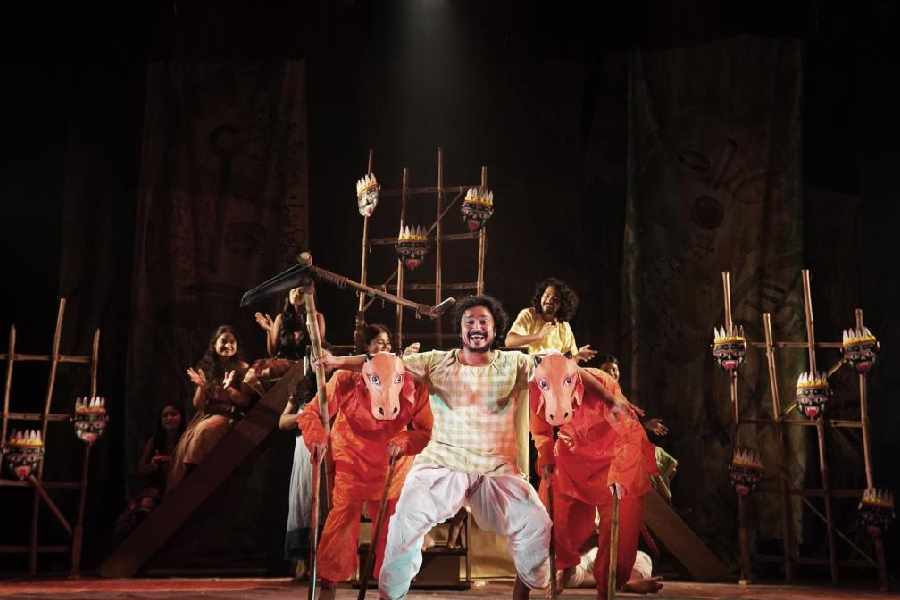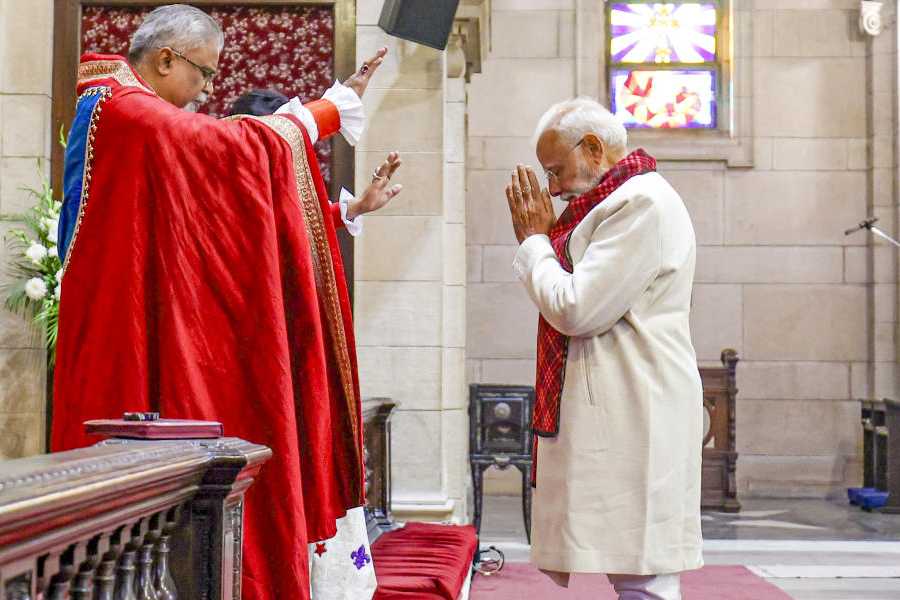Continuing with the now popular trend among theatre groups of inviting directors to direct their plays, Aneek (still basking in the resounding success of Akshorik directed by Debasis Roy) roped in Gaurav Das to direct its latest production, Angina Jure Bhor. Das has already made a name for himself in the Bengali theatre circuit as a director who is majorly invested in plays that explore the politics of gender. Angina Jure Bhor
(written by Das himself), however, is not focused on gender, even though the plight of women is touched upon in the play.
The play opens with an extravagant audio-visual spectacle as masked performers, supported by live music, take the stage to perform an abridged version of the Gomira dance of the Dinajpur districts. The performance, of course, takes us right into the heart of the narrative, which is, at one level, an exploration of the phenomenon of urban cultural practices appropriating folk performative forms and, at another level,
a rather convoluted tale, mainly with a tragic thrust, of a family of performers. At the level of sub-plot is another narrative strand that deals with the tribulations of a prostitute-actress of yesteryear. Because too much happens at the level of the plot, the play gets fragmented into an extended series of episodic sequences. Most of these sequences are designed to end on an emotional high, complete with over-the-top histrionics and loud music. The audience is thus taken on a roller-coaster ride throughout the length of the play, leading to fatigue that is associated with sensory and emotional overload.
There is ample scope to work with the light and the music design of the play. While the light design with its predominance of top sources fails to emphasise the masks and uses hues rather whimsically, the tunes of the songs demand variation. The live background score needs to be adjusted to the volume and the pitch of the on-stage vocalisations. There are gimmicky effects that can be pruned without harming the play.











